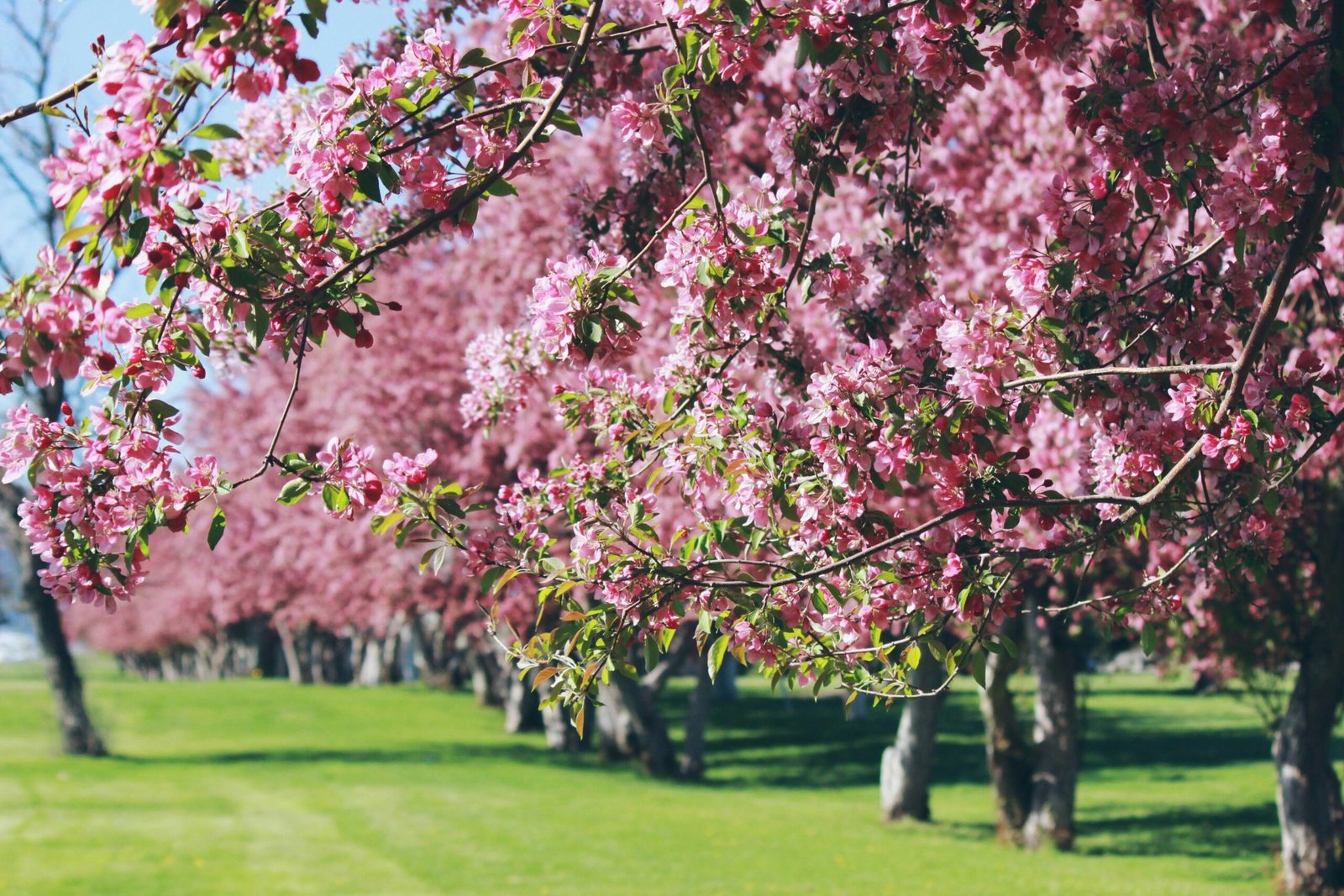One of the major benefits of cherry trees is their aesthetic appeal. With their vibrant blossoms in shades of pink and white, cherry trees add a touch of natural beauty to any landscape. These trees produce a picturesque scene that many people enjoy, whether they are in a backyard garden or lining the streets of a city.
Another advantage of cherry trees is their ability to attract pollinators. The sweet nectar that cherry tree flowers produce is attractive to bees, butterflies, and other insects. As these pollinators visit the blossoms, they inadvertently transfer pollen from one flower to another, aiding in the process of fertilization. This not only helps the cherry tree reproduce but also contributes to the pollination of other nearby plants.
Cherry trees also offer an abundance of delicious fruit. Cherries are not only tasty but also packed with nutrients. They are a good source of vitamins A and C, as well as antioxidants. These antioxidants help protect the body against harmful free radicals, reducing the risk of chronic diseases and promoting overall health.
In addition to their nutritional value, cherries have been associated with various health benefits. Studies have shown that consuming cherries may help reduce inflammation, lower blood pressure, and improve sleep quality. Furthermore, the anthocyanins found in cherries have been linked to improved brain function and a reduced risk of certain cancers.
Furthermore, cherry wood is highly valued for its strength, durability, and beautiful grain patterns. It is commonly used in the production of furniture, cabinetry, and flooring. The rich reddish-brown color of cherry wood adds warmth and elegance to any interior design.
From an environmental perspective, cherry trees play a crucial role in maintaining a healthy ecosystem. They provide habitat and food for a variety of wildlife, including birds and squirrels. These trees’ shade can also aid in cooling the area, reducing the need for air conditioning and energy use.
In conclusion, cherry trees offer a multitude of benefits. They enhance the visual appeal of landscapes, attract pollinators, provide nutritious fruit, offer health benefits, and contribute to the production of high-quality wood. Additionally, they support biodiversity and help mitigate the effects of climate change. Planting cherry trees is not only a beautiful addition to any space but also a sustainable and beneficial choice for both humans and the environment.
Not only do cherry trees offer aesthetic appeal through their stunning blossoms and attractive shape, but they also provide visual interest throughout the year. In addition to the breathtaking display of color that the delicate pink or white flowers produce in the spring, cherry trees continue to improve the landscape in the summer with their lush green foliage.
During the summer months, the cherry tree’s foliage provides shade and adds a touch of elegance to gardens and parks. The leaves, with their vibrant shades of green, create a cool and refreshing atmosphere, inviting people to relax and enjoy the beauty of nature. Whether it’s a picnic under the shade of a cherry tree or a leisurely stroll through a cherry tree-lined path, the visual appeal of these trees is undeniable.
As the seasons change, cherry trees continue to captivate with their ever-changing colors. In the fall, the leaves of the cherry trees transform into a magnificent palette of red, orange, and yellow. These vibrant hues create a stunning contrast against the blue sky, making autumn walks even more enchanting. The leaves gently fall to the ground, forming a colorful carpet that adds a splash of warmth and beauty to the surroundings.
Even in the winter months, when most trees have shed their leaves and appear barren, cherry trees have a unique charm. The bare branches of cherry trees create an intricate pattern against the winter sky, resembling delicate brushstrokes on a canvas. This skeletal silhouette adds an element of elegance and sophistication to the winter landscape, reminding us of the beauty that lies dormant, waiting to bloom again in the spring.
Overall, the aesthetic appeal of cherry trees is undeniable. From their stunning blossoms in the spring to their lush foliage in the summer, vibrant colors in the fall, and unique charm in the winter, these trees offer a visual feast for the eyes throughout the year. Whether used as a focal point in a garden or as a backdrop in a park, cherry trees are sure to impress and enhance any outdoor space with their natural beauty.
2. Delicious Fruit
Another significant benefit of cherry trees is the delicious fruit they produce. Cherries are not only tasty but also packed with essential nutrients. They are a good source of vitamins A and C, as well as antioxidants, which help to boost the immune system and fight against free radicals in the body.
There are various types of cherries, including sweet cherries and sour cherries. Sweet cherries are typically enjoyed fresh and are perfect for snacking or adding to desserts. Sour cherries, on the other hand, are often used in cooking and baking, as their tartness adds a unique flavor to dishes.
Having a cherry tree in your backyard allows you to enjoy fresh, homegrown cherries at their peak of ripeness. This not only provides a convenient and cost-effective way to enjoy this delicious fruit but also ensures that you are consuming cherries that are free from pesticides and other chemicals.
Furthermore, growing your own cherry tree gives you the opportunity to experiment with different cherry varieties. There are numerous cultivars available, each with its own distinct flavor profile. Some cherry cultivars are known for their intense sweetness, while others have a more subtle and complex taste. By planting different varieties, you can create a diverse cherry orchard that offers a range of flavors and textures.
In addition to their delectable taste, cherries have numerous health benefits. They are known to reduce inflammation, promote heart health, and improve sleep quality. Cherries are also a natural source of melatonin, a hormone that regulates sleep-wake cycles, making them a great snack option for those struggling with insomnia or sleep disorders.
Moreover, cherries have been linked to a reduced risk of certain chronic diseases. The antioxidants found in cherries help to protect against oxidative stress, which is a major contributor to the development of conditions like cancer, diabetes, and Alzheimer’s disease. Regular consumption of cherries has also been associated with improved brain function and decreased symptoms of arthritis.
Whether you enjoy them fresh, dried, or incorporated into various recipes, cherries are a versatile and nutritious fruit that can be enjoyed in many different ways. From cherry pies and tarts to cherry-infused cocktails and smoothies, the possibilities are endless when it comes to incorporating cherries into your culinary creations.
So, if you have the space and desire to grow your own fruit, consider planting a cherry tree. You’ll receive not only a stunning and colorful tree that enhances the aesthetics of your backyard, but you’ll also have access to a plentiful supply of delectable, nutrient-rich cherries that the whole family can enjoy.
3. Environmental Benefits
Cherry trees offer several environmental benefits that make them valuable additions to the ecosystem. Firstly, they provide shade, which can help to reduce energy consumption in buildings. By planting cherry trees strategically around your home, you can create natural shade that can lower the temperature inside, reducing the need for air conditioning during hot summer months.
In addition to providing shade, cherry trees also help to improve air quality. Like other trees, they absorb carbon dioxide and release oxygen through the process of photosynthesis. This helps to reduce the levels of carbon dioxide in the atmosphere, which is a major contributor to climate change.
Furthermore, cherry trees provide habitat and food for various wildlife species. Birds, bees, and other pollinators are attracted to the flowers of cherry trees, helping to support biodiversity in the area. The fruits of the cherry tree also serve as a food source for birds and small mammals, contributing to the overall health of the ecosystem.
Another important environmental benefit of cherry trees is their ability to mitigate soil erosion. Their extensive root systems bind the soil, preventing wind or heavy rain from washing it away. This is particularly beneficial in areas prone to erosion, such as hillsides or riverbanks.
Moreover, cherry trees play a role in water conservation. Their roots act as natural filters, absorbing excess nutrients and pollutants from the soil, preventing them from entering water bodies. This helps to maintain water quality and protect aquatic ecosystems.
Additionally, cherry trees contribute to the overall beauty and aesthetics of an area. Their vibrant blossoms in spring and colorful foliage in autumn enhance the visual appeal of parks, gardens, and streetscapes. This not only improves the quality of life for residents but also attracts tourists and boosts local economies.
Finally, cherry trees have a positive impact on human well-being. Numerous studies have shown that spending time in nature, such as under the shade of a cherry tree, can reduce stress levels, improve mood, and enhance overall mental health. The presence of cherry trees in urban areas provides a tranquil and peaceful environment for people to relax and connect with nature.
In conclusion, the environmental benefits offered by cherry trees are numerous and significant. From providing shade and improving air quality to supporting biodiversity and mitigating soil erosion, these trees play a crucial role in maintaining a healthy and sustainable ecosystem. Additionally, their beauty and positive impact on human well-being make them a valuable asset in both urban and rural environments.

